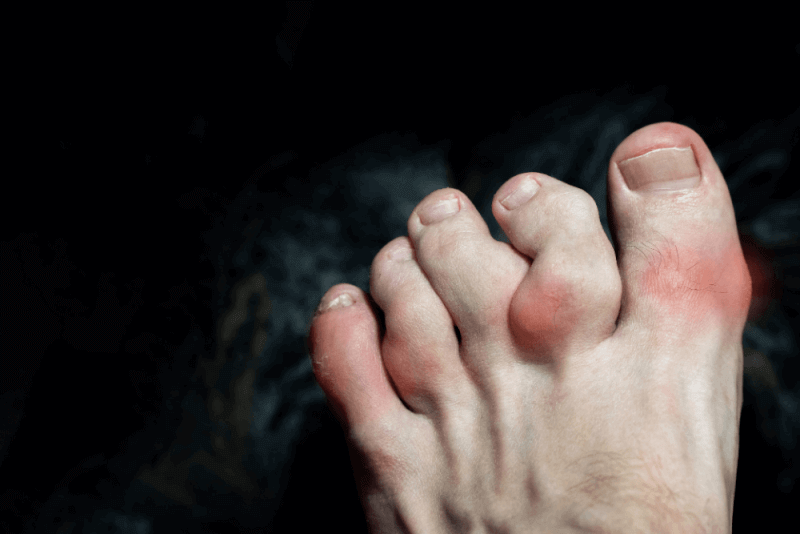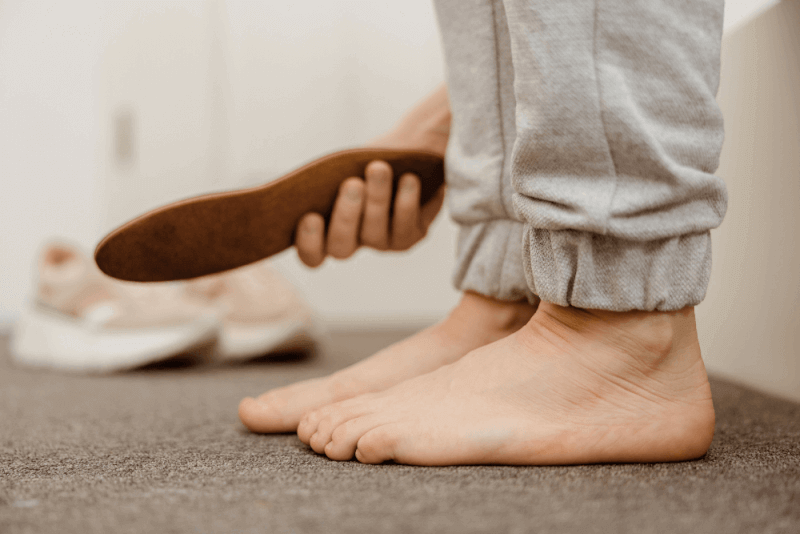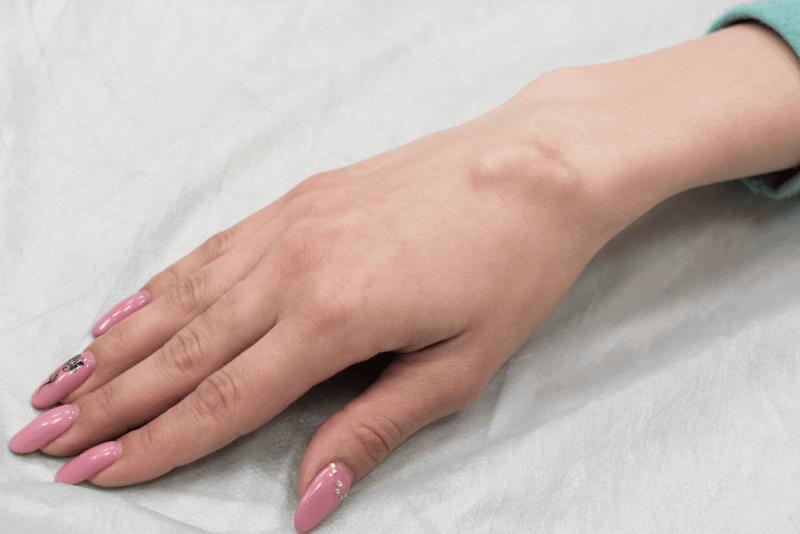What is Carpal Tunnel Syndrome?
Carpal tunnel syndrome, caused by pressure on the median nerve, is a health problem that causes weakness in the hand and arm. The carpal tunnel is a tissue surrounded by bones and muscles located on the palm side of the hand. It occurs due to repetitive hand movements and wrist anatomy. With proper treatment, the symptoms can be eliminated, and the wrist anatomy can be restored, allowing the hand to regain its functions.
Causes of Carpal Tunnel Syndrome
The cause of carpal tunnel syndrome is pressure on the median nerve. The median nerve comes from the forearm and reaches the hand. It passes through the carpal tunnel in this process. It is a nerve that allows the sensation of the fingers, except for the little finger, and the palm. Additionally, it delivers movement signals to the muscles around the thumb.
If the carpal tunnel space is irritated for any reason or if the nerve is compressed, carpal tunnel syndrome occurs. In addition, wrist fractures can cause the carpal tunnel to narrow, leading to the problem. Swelling and inflammation seen in rheumatoid arthritis patients can also cause nerve irritation.
However, there is generally no single cause of carpal tunnel syndrome. It is seen due to a combination of risk factors.
Risk Factors for Carpal Tunnel Syndrome
Several risk factors have been identified that cause carpal tunnel syndrome. These risk factors may not directly cause carpal tunnel syndrome but can cause changes in the space inside the tunnel, leading to irritation or damage to the median nerve.
Anatomical Factors
The anatomical factors that are risk factors for carpal tunnel syndrome include:
- Wrist fractures
- Wrist dislocations
- Arthritis causing deformation of the small bones in the wrist
- Small carpal tunnel
Gender
Carpal tunnel syndrome is more common in women than in men. The reason is that women's carpal tunnels are narrower than men's. Women with carpal tunnel syndrome have narrower carpal tunnels compared to other women.
Conditions that Damage Nerves
Many health problems, especially diabetes, can cause damage to nerves, including the median nerve.
Inflammatory Conditions
Health problems with inflammatory components, especially rheumatoid arthritis, can affect the lining around the tendons in the wrist, leading to carpal tunnel syndrome.
Medications
Some studies show a connection between certain medications used in breast cancer treatment and carpal tunnel syndrome.
Obesity
Being significantly overweight can increase pressure on the median nerve, leading to carpal tunnel syndrome.
Edema
Edema can increase fluid pressure in the carpal tunnel, causing pressure on the median nerve. It is most commonly seen during pregnancy and menopause. Carpal tunnel syndrome associated with pregnancy usually resolves on its own after pregnancy.
Other Medical Conditions
Other diseases, such as thyroid disorders, kidney failure, and lymphedema, are also among the causes that increase the risk of carpal tunnel syndrome.
Workplace Factors
Working with vibrating tools or jobs that require repeated and bending wrist movements for extended periods also increases the risk of carpal tunnel syndrome. The risk is higher if these tasks are performed in cold environments, as the pressure on the median nerve increases more.
Studies on computer use and carpal tunnel syndrome have not reached conclusive results. Some studies show that using a mouse, rather than a keyboard, increases the risk of carpal tunnel syndrome. However, because keyboard use can cause different types of hand and wrist pain, there is not enough supportive information from the studies.
Symptoms of Carpal Tunnel Syndrome
The symptoms caused by carpal tunnel syndrome appear gradually and generally include the following:
Tingling and Numbness
Numbness can be noticed in the fingers or the entire hand. The fingers, especially except for the little finger, are affected by this numbness. Additionally, electric shock-like sensations may occur in the mentioned fingers.
The tingling and numbness patients feel can also spread from the wrist to the arm. Symptoms can become more severe, especially when holding the steering wheel, phone, or reading a newspaper. In some cases, these symptoms can cause patients to wake up from their sleep.
Many patients shake their hands or arms to alleviate this symptom. However, over time, the feeling of numbness and tingling becomes constant.
Weakness
Carpal tunnel syndrome also causes weakness in the hands. As a result, patients may drop objects from their hands. This situation is due to the numbness in the hand or the weakness in the thumb muscles caused by the median nerve.
Diagnosis Methods for Carpal Tunnel Syndrome
To diagnose carpal tunnel syndrome, the symptoms observed in the patient must first be examined. An example of this examination is investigating symptoms that are not seen in the little finger but appear in other fingers.
The symptoms of carpal tunnel syndrome tend to increase, especially when the hand and arm are kept still and at night. Additionally, the likelihood of feeling numbness is higher in the morning.
Physical Examination
The first step in diagnosing carpal tunnel syndrome is a physical examination. At this stage, the sensations in the fingers and the grip strength in the hand are tested. Bending the wrist, lightly tapping on the nerve, or simply applying light pressure on the nerve can trigger symptoms.
X-ray
Some symptoms may resemble pain caused by fractures or arthritis. Therefore, an X-ray can be taken to eliminate other causes.
Ultrasound
Detailed images of the bones and nerves can determine whether there is nerve compression.
Electromyography
Electromy ography measures small electrical discharges produced in the muscles. To perform the test, fine-needle electrodes are placed into specific muscles. These electrodes allow the evaluation of electrical activity between muscle contractions and rest. This test can also eliminate other conditions.
Nerve Conduction Study
Another type of electromyography is a nerve conduction study performed by attaching two electrodes to the skin. It helps see if electrical impulses in the carpal tunnel are slowing down. A small shock is given to the median nerve for this.
Treatment Methods for Carpal Tunnel Syndrome
To successfully treat carpal tunnel syndrome, treatment should begin as soon as symptoms appear. Especially in the early stages, some things patients can do on their own will help the condition improve. These methods include:
- Taking more frequent breaks to rest the hands
- Applying cold compresses to reduce swelling
- Avoiding activities that worsen symptoms
Treatment options for carpal tunnel syndrome include splinting, surgery, and medication. Splinting and other conservative treatments are particularly beneficial for improving symptoms that have been present for less than ten months.
Carpal Tunnel Syndrome Surgery
If other treatment options do not work, surgical methods may be recommended for patients. The primary goal of surgical procedures in treating carpal tunnel syndrome is to cut the ligament pressing on the median nerve.
Endoscopic Surgery
This is a closed surgical procedure. A small incision is made, and a medical device with a camera at the end is used to view the area to be treated and cut the ligament.
Open Surgery
In the open method, a cut is made through the palm and over the carpal tunnel, and the ligament tissue pressing on the median nerve is cut. The recovery process is much longer than the endoscopic method.
Post-Surgery
After surgery, the ligament tissues will come back together, creating more space for the nerve. This internal healing continues for a few months. However, the opened cut heals within a few weeks. The hand should be gradually used after surgery. However, excessive use and strenuous movements should be avoided during these exercises.
It may take a few weeks or months for the wrist pain and weakness to go away after surgery. Especially in patients with severe symptoms, the symptoms may not completely disappear after surgery.
Patients who have had carpal tunnel surgery are advised to keep their wrists above heart level and move their fingers to reduce swelling. The grip strength of the fingers returns to normal about 2-3 months after surgery. However, if the condition of the median nerve was poor before surgery, it might take 6-12 months for grip strength to return. In very severe cases, it is not expected for strength to return. However, surgery is performed to prevent the condition from progressing.
The numbness and tingling associated with carpal tunnel syndrome usually end immediately after surgery in mild cases. However, in severe cases, it takes 6-12 months for this condition to subside, and the fingers to regain their sensation.
Non-Surgical Treatment for Carpal Tunnel Syndrome
If carpal tunnel syndrome is diagnosed early, it is possible to treat it using non-surgical methods. These methods include:
Splinting
Wearing splints, especially at night, will help keep the wrist in a fixed position, alleviating numbness and tingling. Night splints will also help relieve daytime symptoms. Using a splint is one of the best options, especially for carpal tunnel syndrome seen during pregnancy.
Non-Steroidal Anti-Inflammatory Drugs (NSAIDs)
NSAIDs, such as ibuprofen, can be used for short-term relief from the pain caused by carpal tunnel syndrome. However, there is no evidence that these drugs treat carpal tunnel syndrome.
Corticosteroids
Another method used to alleviate the pain caused by carpal tunnel syndrome is corticosteroids. Corticosteroids help reduce pressure on the median nerve. The injection method is more recommended than the oral method.
How to Prevent Carpal Tunnel Syndrome?
There is no standardized method to prevent carpal tunnel syndrome. However, the following methods can reduce stress on the wrist:
- Pressing the keys more softly for those who use cash registers or keyboards
- Not squeezing or pressing down on the pen for those who write by hand
- Taking periodic breaks to rest the wrists
- Avoiding completely bending the wrist
- Correcting posture disorders
- Ensuring the computer mouse is ergonomic
- Keeping the hands warm












C** R** | 07 Jun 2024